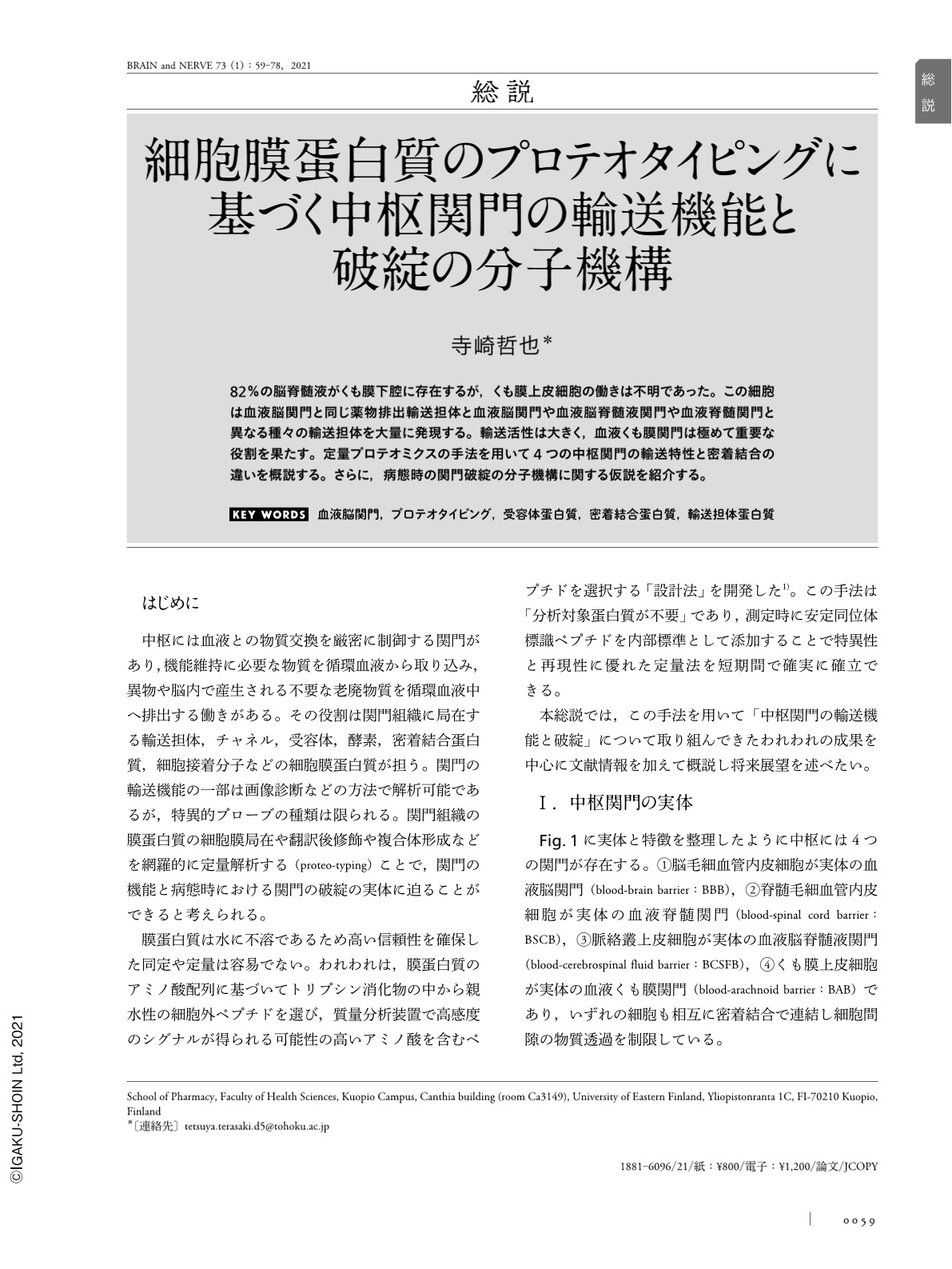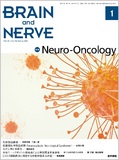Japanese
English
- 有料閲覧
- Abstract 文献概要
- 1ページ目 Look Inside
- 参考文献 Reference
82%の脳脊髄液がくも膜下腔に存在するが,くも膜上皮細胞の働きは不明であった。この細胞は血液脳関門と同じ薬物排出輸送担体と血液脳関門や血液脳脊髄液関門や血液脊髄関門と異なる種々の輸送担体を大量に発現する。輸送活性は大きく,血液くも膜関門は極めて重要な役割を果たす。定量プロテオミクスの手法を用いて4つの中枢関門の輸送特性と密着結合の違いを概説する。さらに,病態時の関門破綻の分子機構に関する仮説を紹介する。
Abstract
Although 82% of the cerebrospinal fluid (CSF) is localized in the subarachnoid space, the function of the blood-arachnoid barrier (BAB) has not been elucidated. We found an abundance of drug efflux transporter proteins in the BAB. Moreover, several transporter proteins, including organic anion transporters and organic cation transporters have been found in the BAB. Significant in vivo transport activity of the BAB has been observed, suggesting that the BAB plays a pivotal role in the CNS barrier. Using quantitative targeted absolute proteomic analysis, we determined the similarities and differences in transport function and tight junction formation among the BBB, BAB, blood-CSF barrier (BCSFB), and blood-spinal cord barrier (BSCB). Furthermore, we proposed several hypotheses regarding the molecular mechanism underlying CNS barrier disintegration in the presence of oxidative stress, TNF-α release, and multiple sclerosis.

Copyright © 2021, Igaku-Shoin Ltd. All rights reserved.


